The Civil Service in 2016 – smaller, older, better gender balance
Gavin Freeguard, Adam Boon and Robert Adam find a smaller, older Civil Service, with improving gender balance
The latest Civil Service statistics, which give us data on everything from diversity to grades, are out today. Gavin Freeguard, Adam Boon and Robert Adam find a smaller, older Civil Service, with improving gender balance. All data as of March 2016.
Since 2010, the Civil Service has become: Smaller. There were 386,620 civil servants in March 2016 (full time equivalent), down 20.5% from March 2010. That’s a difference of 99,820 jobs. A quarterly version of these figures, which actually take us up to June, shows the full scale of that reduction: 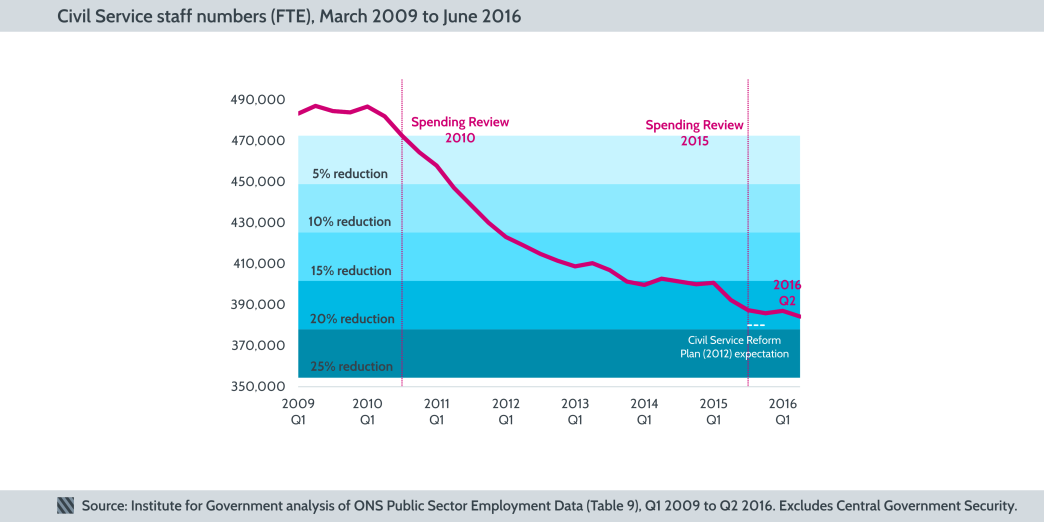
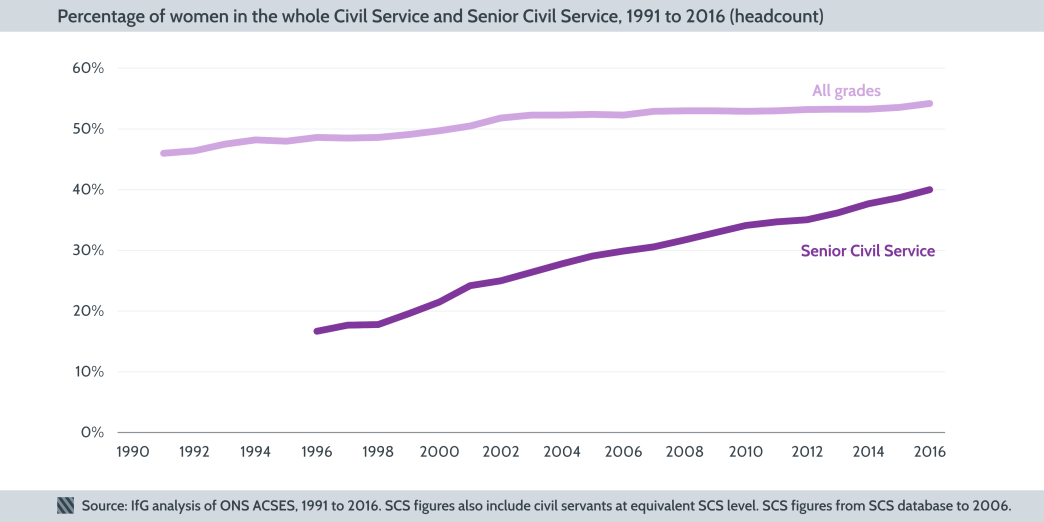
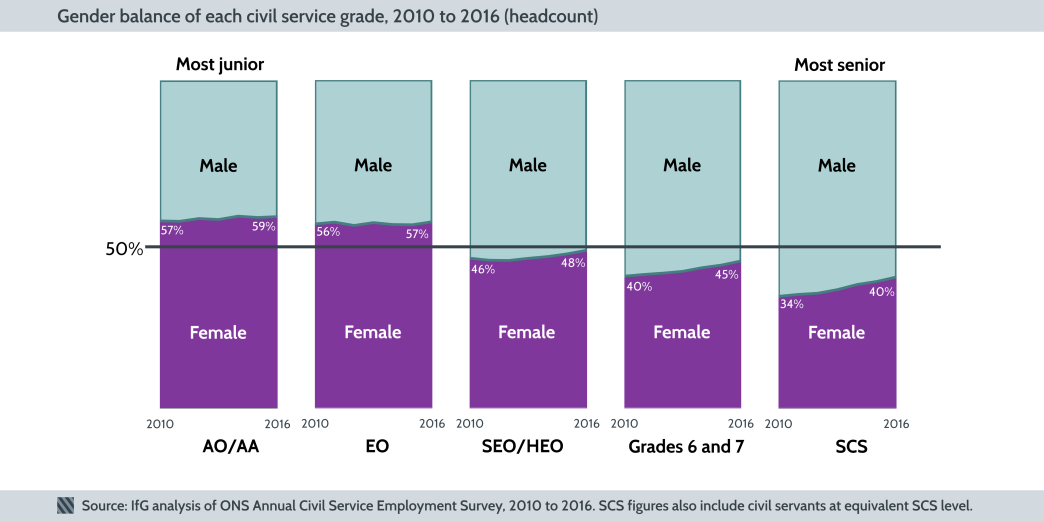
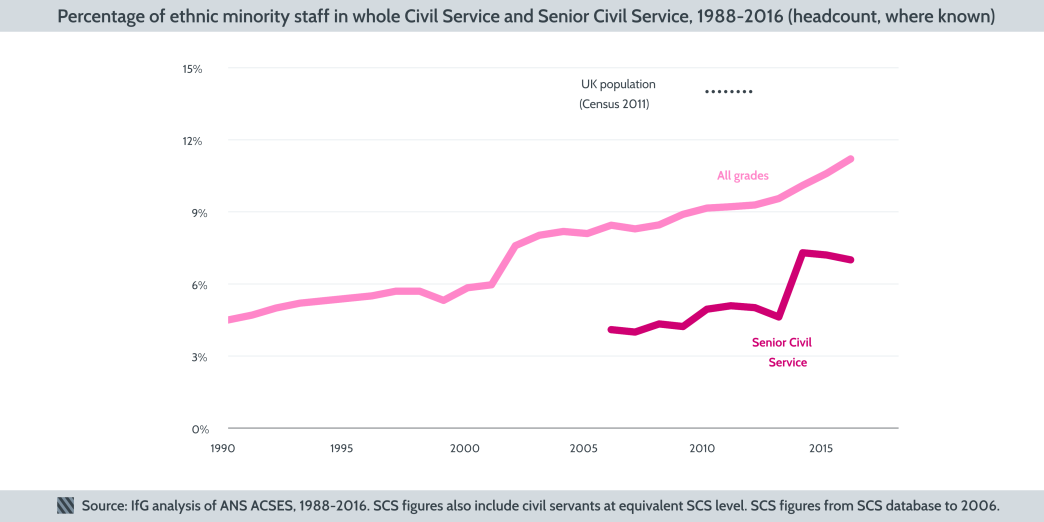
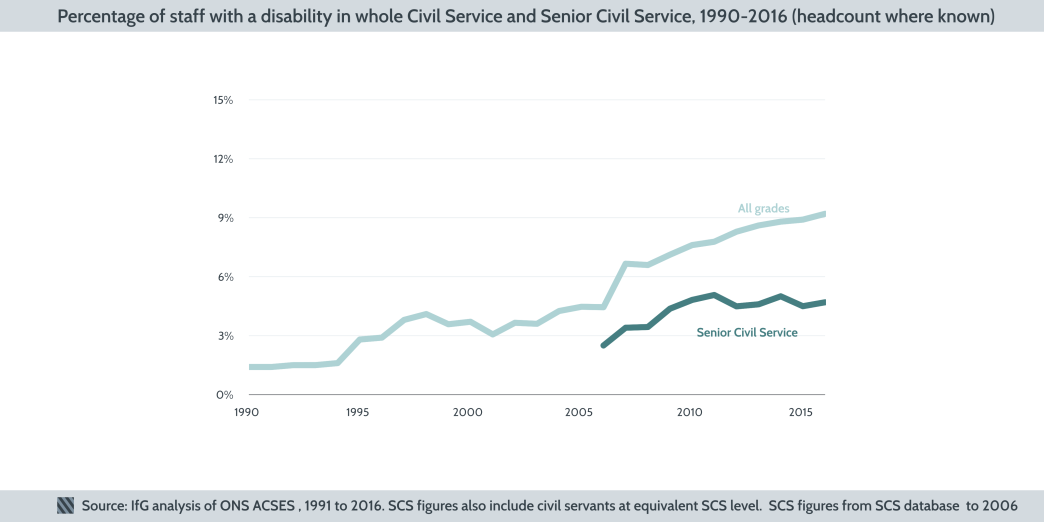
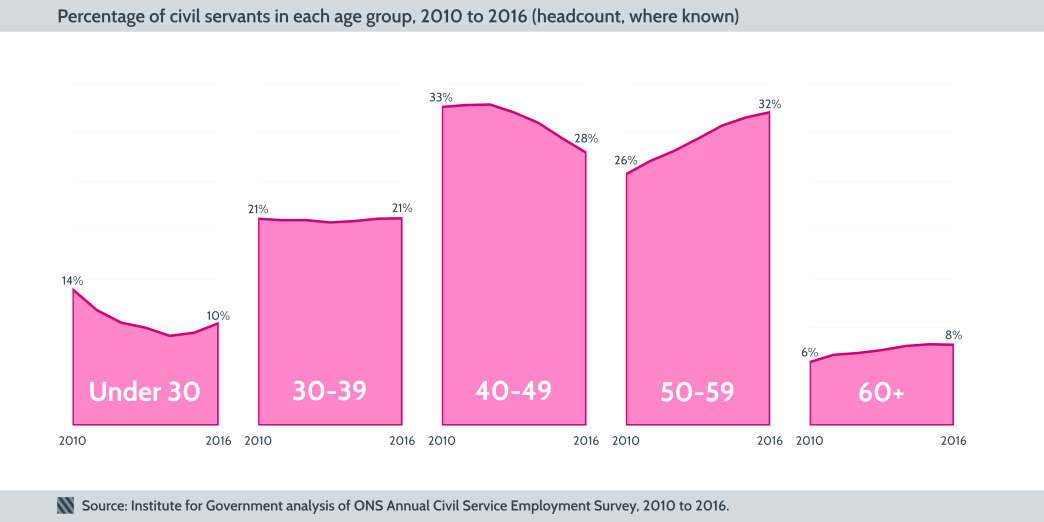
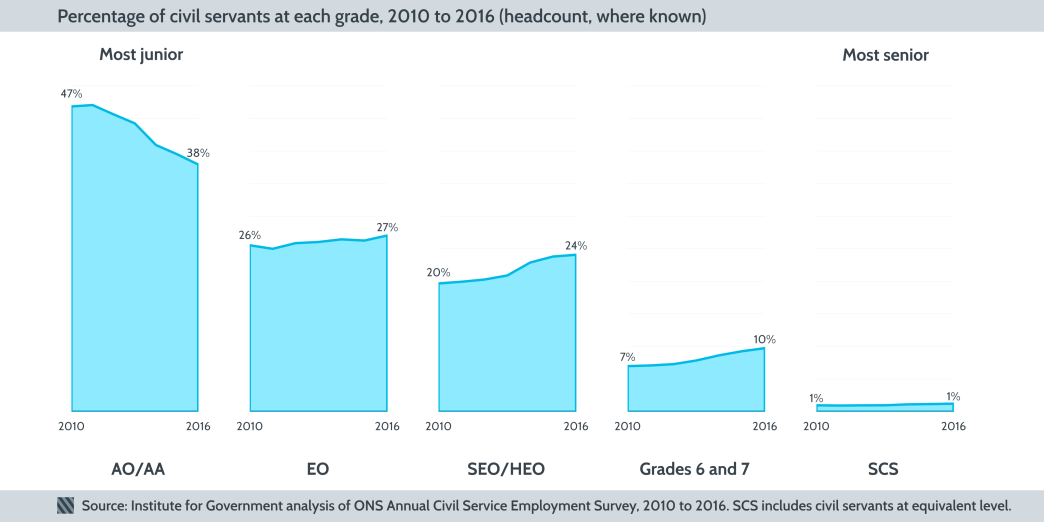
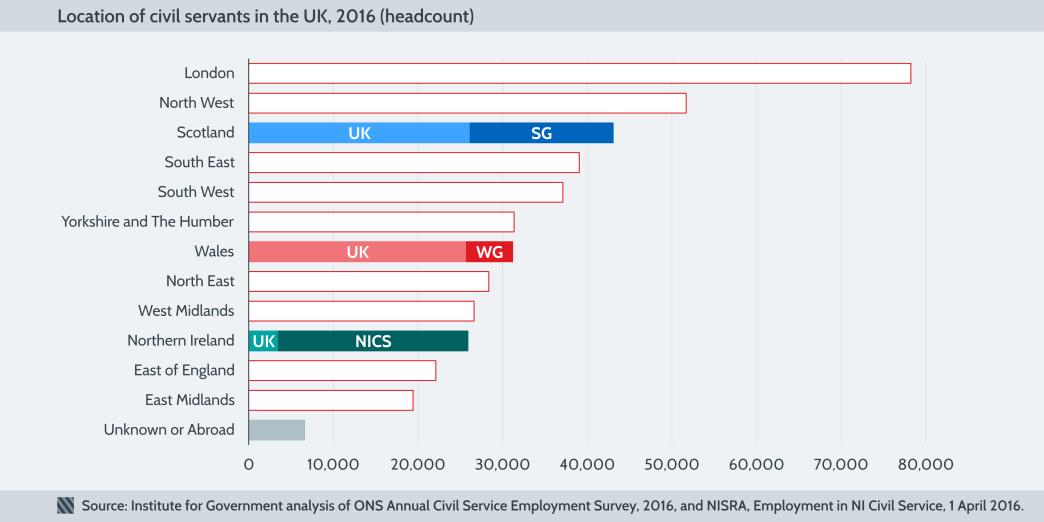
Please note: Central Government Security numbers are no longer included in the ONS Annual Civil Service Employment Survey for security reasons. We have adjusted our staff numbers chart and our location calculations to exclude these employees back to 2009 and 2010. They are still included in those other charts which look at composition of the Civil Service by percentage (i.e. grade, age, gender, diversity).
- Topic
- Civil service
- Administration
- May government
- Publisher
- Institute for Government